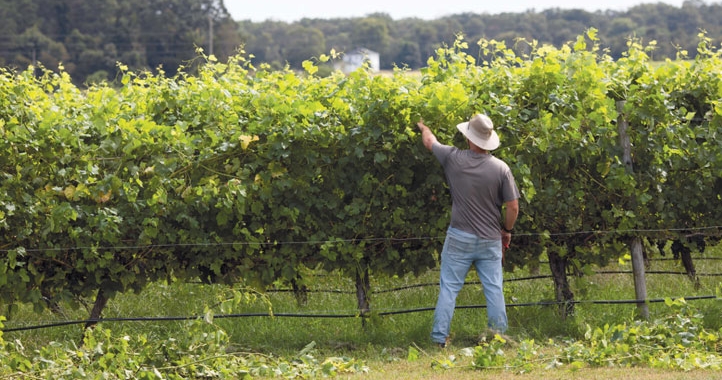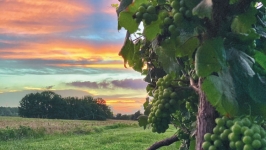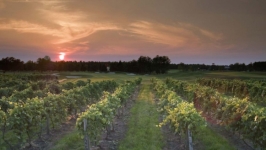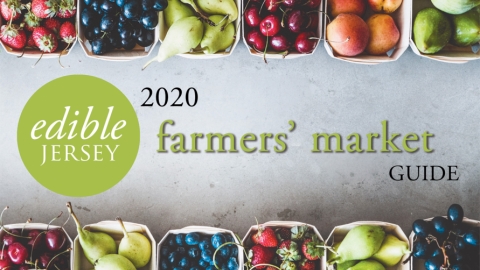Re-Thinking Sweet Wines
“We have something for everyone,” says Ollie Tomasello, owner of Plagido’s Winery in Hammonton, NJ. “We want to be able to please everyone’s palate instead of just a select few.”
At the 2020 Annual Finger Lakes International Wine and Spirits Competition, Plagido’s 2017 Cabernet Sauvignon, a dry red, won Best of the Competition in its category. The win gave Tomasello’s winery some serious bragging rights. Yet he’s proud of his wines that are on the sweeter side, too.
Tomasello points to his Concetta’s Casalinga, a sweet blend of Concord and Fredonia grapes named after his mother, as one of those wines. It sells out every year.
“It’s been the winery’s number one sweet seller for 13 years, and every year we increase production,” he says. His crowd-pleasing red blend is made from grapes he grows on his estate, and it— along with other similarly sweet offerings—should be part of the conversation about local wines.
Yes, despite the fact that there are quality sweet wines in New Jersey and neighboring Pennsylvania, wine professionals tend to focus primarily on dry wines, a preference that’s become synonymous with quality. In tasting rooms, this has meant that the sweeter wines, which have always sold briskly, are often dismissed as serious wines and those who enjoy them not considered serious wine drinkers.
“Customers will go through a tasting and be told, ‘These are our sweet wines,’ and the conversation kind of ends there,” says Corey Krejcik of Chaddsford Winery in Chadds Ford, PA.
The wine regions of New Jersey and Pennsylvania— once primarily known for sweet fruit wines—have dramatically stepped up their dry wine game over the past two decades. As the region’s viticultural portfolio came to include grapes that are traditionally made into dry wines, such Cabernet Franc, Cabernet Sauvignon, and Chardonnay, local wineries began garnering national recognition. The shift that was good for the industry, however, relegated the popular sweet wines to something talked about in hushed tones among industry professionals.
But that is starting to change. Chaddsford is one winery in the region that is now including the sweeter side of its portfolio— wines made from grapes such as Niagara, Steuben, and Vignoles— in its tasting-room conversation. Those pouring the wines are talking about the grape growers. They’re talking about the varietals and why the winery elected to use them. They’re giving these wines the same respect they give the dryer wines in their portfolio while in turn showing respect to sweet wine drinkers.
Krejcik would like to see that same change in perception happen in other wineries in Pennsylvania and New Jersey.
Drink What You Like
Krejcik has a no-shame attitude toward the sweet wine made at Chaddsford. It’s not an outlook shared by everyone in the industry. There’s a stigma around sweet wines that leads wineries to downplay those offerings. In turn, many people who drink them believe they aren’t “real” wine drinkers and even apologize for enjoying them.
“Many times I’ve had people come in and say, ‘I’m sorry, I only drink sweet wine,’” he says. He passionately believes they have no reason to apologize.
Maybe if those who feel compelled to apologize knew they weren’t alone, they’d have more confidence in their palates.
A 2018 survey of 1,191 American wine consumers from all 50 states conducted by Sonoma State University’s Wine Business Institute found that sweet wines are the preference for the majority of wine drinkers. Forty-five percent of those surveyed like their wines to be semi-sweet, compared to the 36 percent who like their wines dry. Semi-sweet, smooth, and fruity were the top three things the average American wine consumer said they prefer in a wine.
Many local wineries understand this, and they aim to please by offering semi-sweet and sweet, yet well-crafted, wines for those who want them.
Sand Castle Winery in Erwinna, PA, plants only vinifera—European grapes such as Riesling, Chardonnay, Pinot Noir, and Cabernet Sauvignon. In 1985, when founders Joseph and Paul Maxian first planted those varietals in their Bucks County vineyard, they were intended for dry wines only. But when winery representatives came back from festivals, they reported that drinkers were asking for a sweet red. That’s how Sand Castle’s popular sweet Claret was born.
“Every time we tried to make a sweet red, it was so yucky,” says Joseph Maxian. “Then we finally hit the combination and it took off. One day, the gentleman who worked the festival poured it over slices of oranges and created a monster.”
It became known as a breakfast wine, and suddenly sales skyrocketed.
Sand Castle now has a portfolio of both dry and balanced sweet wines that’s split close down the middle, according to Maxian. Wineries that offer a mix of sweeter and dryer wines find it helps bring in groups. After all, every group has a mix of preferences and there’s always at least one sweet wine fan.
Melissa Kent, who works at a boutique in Haddonfield, NJ, underscores that point. She visits local wineries monthly. She’s been around wine all her life.
“Being Italian, there was always wine withevery meal,” she says. She learned to enjoy well-made, dry wine from a young age but now drinks “literally everything.”
She usually goes to a winery with a group of three or four friends or family, and if a winery sold only dry or only sweet, it could be a problem.
“I guess it could work,” Kent says, “but if a winery had only dry wines, a sweet drinker might go just because it was an outing, but they wouldn’t partake in any wine. The same goes for sweet. Those who are only into dry reds might not even go to a winery that only had sweet.”
Her favorite local wine is Jersey White Reserve from William Heritage Winery in Mullica Hill, NJ. The wine is a blend of Sauvignon Blanc, Riesling, Chenin Blanc, and Moscato, and it’s an example of what sweet wine drinkers are reaching more for these days: sweet, but not too sweet.
“Overall, we have seen a shift in sweet wine drinkers looking for something less sweet,” says Rich Heritage, director of sales and marketing for his family’s winery. “Our sweet wine fans tend to be moving from wines with 6—9 percent residual sugar to wines with 4 percent residual sugar.” That 4 percent is where Kent’s favorite wine falls.
“It’s not overly sweet,” says Kent. “A wine with too much [sugar] can make you feel sick, but this a perfect blend for me.”
While Kent attributes the not-overly-sweetness to the blend, there’s more to it than that. The creation of a great sweet wine requires a winemaker highly skilled in achieving balance.
A DRINKER SHOULD GET A SENSE OF SWEETNESS AT FIRST SIP, BUT ONCE THE WINE HAS BEEN SWALLOWED, THE ACID WILL HELP TO CLEAR THE SUGAR OFF THE PALATE.
Quality Counts
Kent also enjoys the sweeter side of the portfolio at Bellview Winery in Landisville, NJ, where a wine’s balance is taken seriously by the winemaker.
What balance means when it comes to wines, especially those on the sweeter side, is hitting just the right notes of sugar, alcohol, and acid in the right combination. It’s harder to do than it sounds.
Bellview’s winemaker David Gardner says sweet wines have an important place at Bellview because customers want them. He and his team go through a rigorous process to make sure they’re giving wine drinkers what they want without sacrificing quality or balance.
When it’s time to make a sweet wine, Gardner looks at records of the wine’s past vintages for guidance. Then he prepares bench trials, making small batches of the wine in different ways with a range of sweetness. He sits down with three or four others from the winery, and they choose what they think is the most appropriate batch, with balance being key.
“Acidity is what creates balance with sugar,” Gardner says. The team chooses a batch with a balanced, crisp finish. The result is that a drinker should get a sense of sweetness at first sip, but once the wine has been swallowed, the acid will help to clear the sugar off the palate.
People in the wine industry often say, “Americans talk dry but they drink sweet.”
Yet in tasting rooms, in wine stores, and in the wine media, dry wines are elevated, making it seem like they’re the only ones that count. It doesn’t help that there’s a lot of bad sweet wine made, wine where sugar is added to mask flaws in the wine. But there’s a lot of bad dry wine made, too, yet that doesn’t sully the reputation of dry wine as a whole.
PEOPLE IN THE WINE INDUSTRY OFTEN SAY “AMERICANS TALK DRY BUT THEY DRINK SWEET.”
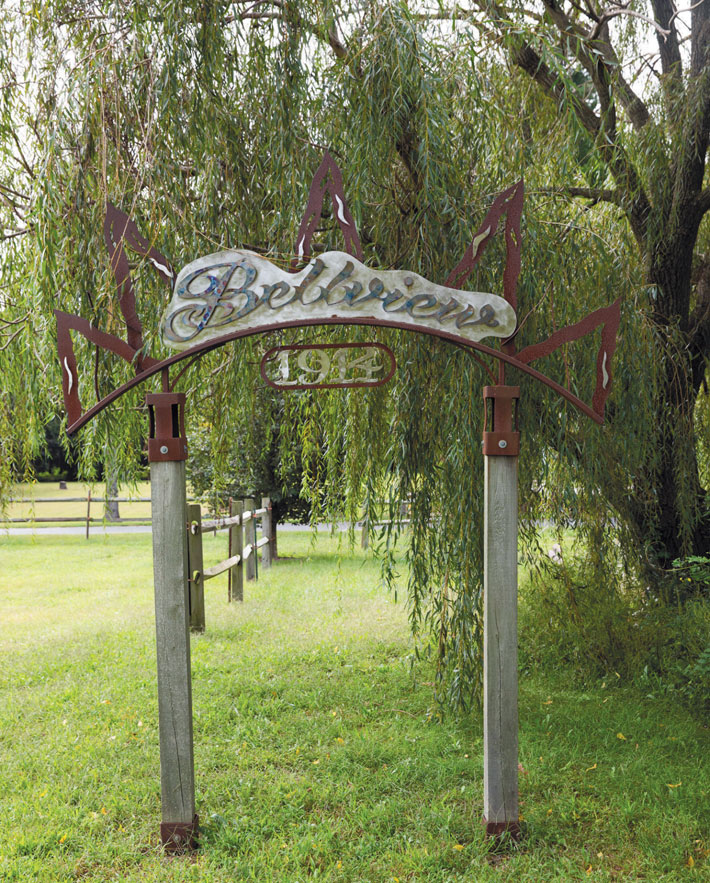
Where’s the Money?
The sales of sweet wines keep the lights on at many wineries, and Krejcik believes it’s time for that important detail to stop being the industry’s dirty little secret. “Why can’t we be proud of the fact that we make quality sweet wine and dry wine?” he asks.
At Plagido’s, Bellview, William Heritage, Chaddsford, and Sand Castle, as well as many other wineries throughout the region, sweet wines are financially important.
First of all, they’re generally less expensive to produce. Since they usually aren’t aged, the winery doesn’t incur the expense of holding wine in barrel for a year or more before bottling. When these wines are released quickly, their sales help bring in cash just months after harvest.
The grapes that go into many sweeter wines are less expensive to grow if they are varietals that are hardy growers on the East Coast. Grape-growing in the region is challenging because the growing season is short and rains, humidity, or an untimely frost can wreak havoc on a vintage’s quality and yield. Hardy grapes like the Niagara, Steuben, and Vignoles that Chaddsford uses can better handle these conditions. Because they’re less expensive to grow and have good yields, more wine can be made from them at a lower cost.
The financial benefits of using these hardier grapes reach beyond the wineries. Wineries that pay growers for grapes are contributing to the region’s agricultural economy. Chaddsford employs growers in PA’s Lake Erie region and NY’s Finger Lakes region to grow a good portion of their sweet wine grapes.
“We work with some great growers, great families,” says Krejcik. “People are pouring their livelihood into growing these types of grapes.”
Plagido’s Tomasello pours his efforts into both growing and winemaking.
“I love being a farmer first, a winemaker second,” he says. And while he puts great passion and focus onto turning many of the grapes he farms into dryer wines, sweeter wines aren’t disappearing from his tasting room any time soon. Recently, he began to again produce one of his sweet wines made from the hardy Chambourcin grape.
“We brought our Homestead back that’s been gone for a few years, and it’s a sweet wine. I was excited to bring this one back because there’s a lot of caramel and vanilla notes in this wine,” he says. “I think it pairs well with a lot of different foods.”
5 Sweet Wines to Seek Out
NEW JERSEY
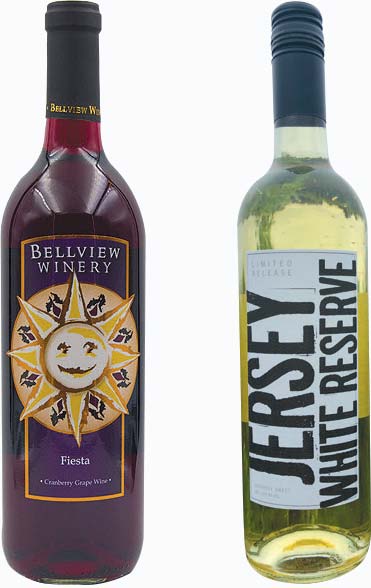 Bellview Winery Fiesta
Bellview Winery Fiesta
This blend of red grapes and cranberries is one of Bellview’s most popular wines. It’s refreshing as is, and it also is a great base wine for sangria. ($11)
Plagido’s Winery Empire
This barrel-aged port-style wine made with chambourcin has flavors of dark berries with a bit of vanilla and coffee. A wonderful after-dinner sipper to pair with dark chocolate or a rich cheese. ($22.99)
William Heritage Vineyards Jersey White Reserve
An unoaked blend, this vibrant wine has aromas of litchi and honeydew. With flavors of tropical and stone fruits, it’s a popular wine for the winery. ($18)
PENNSYLVANIA
Chaddsford Sunset Blush
Made from the same Steuben grapes as their Redux Dry Rosé, the Sunset Blush is a sweet, thirst-quenching wine full of peach and grapefruit aromas with a dry finish. ($14)
Sand Castle Winery Alpine Spice
A white wine cooked with spices (the heat brings the ABV down to 7 percent), this wine tastes like liquid apple pie. In the cooler weather, it’s delicious heated. ($19)
3 Tips for Pairing Sweet Wines with Food
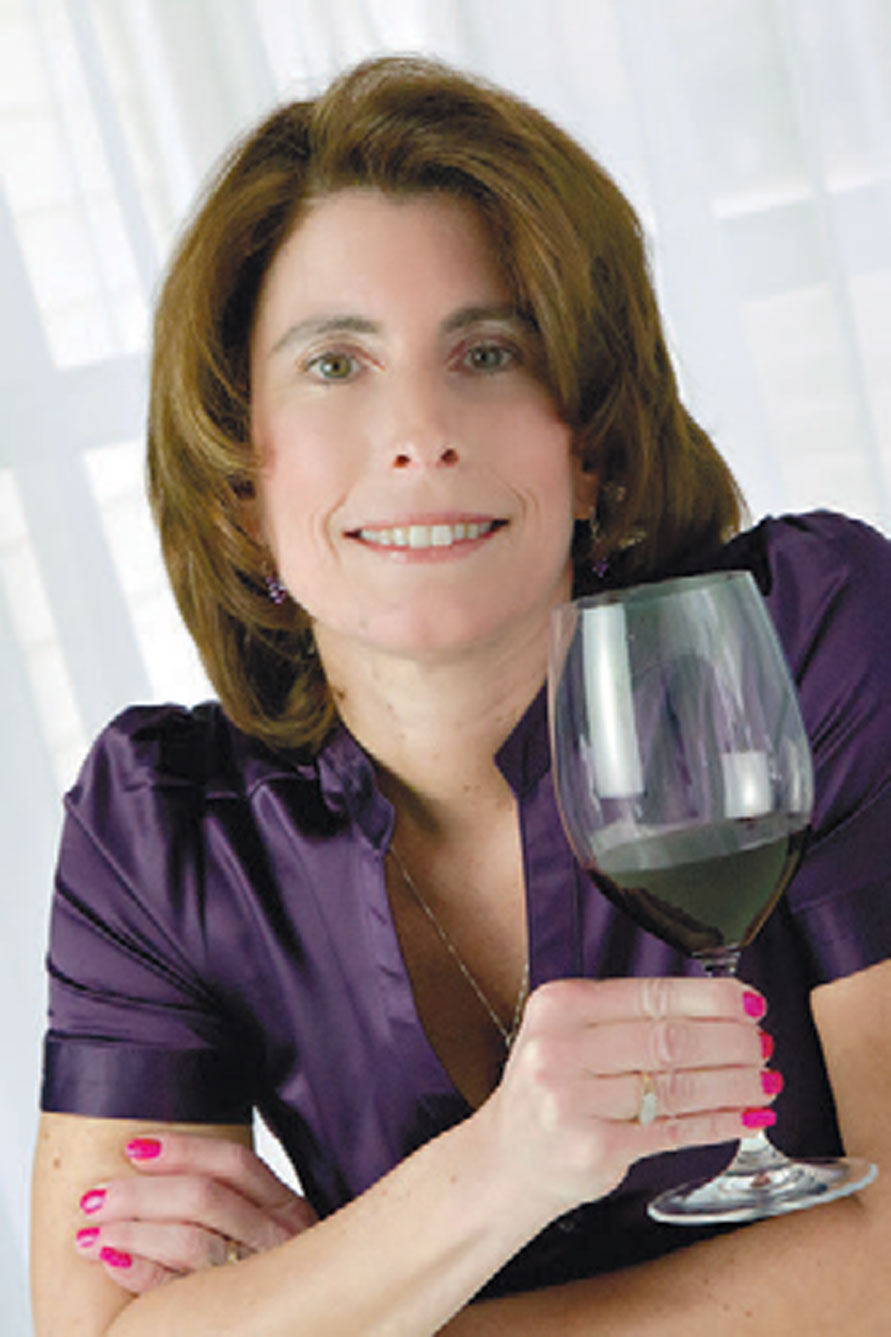 Wine educator Debbie Gioquindo, who helps guests pair their wines with the food served at her restaurant Kitchen 330 in Stone Harbor, NJ, has these tips for pairing sweeter wines with food.
Wine educator Debbie Gioquindo, who helps guests pair their wines with the food served at her restaurant Kitchen 330 in Stone Harbor, NJ, has these tips for pairing sweeter wines with food.
- Pair sweet blush wines with chicken or pork served with a fruited sauce. Peach-sauced pork or redberry-sauced chicken will complement the fruit flavors in the wine. She also suggests adding a little of the wine you’re going to drink to the sauce.
- A classic pairing for a semi-sweet or sweet Riesling is spicy food. Pair pad Thai, jalapeño poppers, General Tso’s Chicken, spicy shrimp, or a Low Country boil with a wine that will help tame the spice in the dish.
- Sweet wine works well with desserts like crème brûlée, panna cotta, or cheesecake. Try pairing a red sweet wine with a red berry pie or a white sweet wine with apple or peach pie.




